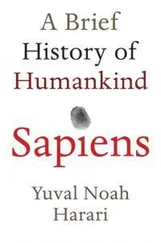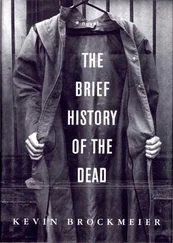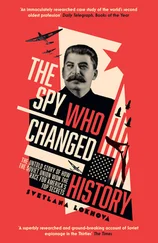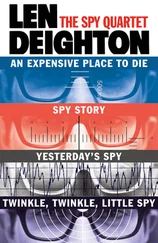Paul Simpson - A Brief History of the Spy
Здесь есть возможность читать онлайн «Paul Simpson - A Brief History of the Spy» весь текст электронной книги совершенно бесплатно (целиком полную версию без сокращений). В некоторых случаях можно слушать аудио, скачать через торрент в формате fb2 и присутствует краткое содержание. Город: London, Год выпуска: 2013, ISBN: 2013, Издательство: Constable & Robinson, Жанр: Прочая документальная литература, на английском языке. Описание произведения, (предисловие) а так же отзывы посетителей доступны на портале библиотеки ЛибКат.
- Название:A Brief History of the Spy
- Автор:
- Издательство:Constable & Robinson
- Жанр:
- Год:2013
- Город:London
- ISBN:9781780338910
- Рейтинг книги:3 / 5. Голосов: 1
-
Избранное:Добавить в избранное
- Отзывы:
-
Ваша оценка:
- 60
- 1
- 2
- 3
- 4
- 5
A Brief History of the Spy: краткое содержание, описание и аннотация
Предлагаем к чтению аннотацию, описание, краткое содержание или предисловие (зависит от того, что написал сам автор книги «A Brief History of the Spy»). Если вы не нашли необходимую информацию о книге — напишите в комментариях, мы постараемся отыскать её.
A Brief History of the Spy — читать онлайн бесплатно полную книгу (весь текст) целиком
Ниже представлен текст книги, разбитый по страницам. Система сохранения места последней прочитанной страницы, позволяет с удобством читать онлайн бесплатно книгу «A Brief History of the Spy», без необходимости каждый раз заново искать на чём Вы остановились. Поставьте закладку, и сможете в любой момент перейти на страницу, на которой закончили чтение.
Интервал:
Закладка:
While agents in place continued to make a valuable contribution to the espionage activities of the American intelligence community during the late fifties, their work was supplemented by two other sources — the advent of the spy-plane program, and the increased use of cryptographics, courtesy of the newly established National Security Agency.
The early fifties saw the ‘Reds under the Bed’ scares, fomented by Senator Joseph McCarthy, and despite his downfall, there were many who believed that the Soviet Union was considerably stronger than it actually was. All the various agencies had to make estimates, and inevitably used worse case scenarios as the basis for these. The launch of the Sputnik satellite in 1957 did nothing to quell those fears — not only could the Russians launch missiles at the US from their various territories around the world, but they could now do so from space as well.
The CIA’s Project Aquatone went a long way to dealing with the queries raised by the various other agencies. As a CIA report written a few days after the initial operation pointed out, ‘Five operational missions have already proven that many of our guesses on important subjects can be seriously wrong, that the estimates which form the basis for national policy can be projections from wrong guesses, and that, as a consequence, our policy can indeed be bankrupt.’
Project Aquatone involved a pilot flying at 70,000 feet above the Soviet Union, photographing everything that he could see. After President Eishenhower gave the go-ahead in November 1954, a special plane, the U-2, was devised by Lockheed engineer Clarence Kelly Johnson, and in July 1955 became the first to be tested at the Groom Lake facility in Nevada — now better known as the conspiracy-inspiring Area 51. A new camera was developed by James Baker and Edwin Land, the creator of the Polaroid camera, with the resolution necessary to gain detailed information from the air.
The first flight took off from Wiesbaden in West Germany on 4 July 1956, and despite Khruschev ordering it to be shot down, it carried out five of its seven allotted missions, providing information on the Soviet Navy’s Leningrad shipyards as well as causing a drastic revision of the armed forces’ estimates of Soviet bomber strength and the military’s state of readiness. For the rest of the decade, the CIA would maintain the cover story that the missions were purely of a scientific nature, all the while improving the U-2’s capabilities, and working on a new plane, Project Oxcart, which could supersede it.
Although the U-2 would continue in active operational service for a further fifty years — and is still in use today by the US armed services — the program of overflights across the Soviet Union came to a sudden halt on 1 May 1960, when the twenty-fourth mission, flown by Captain Francis Gary Powers, was shot down. The wreckage of the plane was put on display by the Russians, and Powers was the subject of a show trial. He would only serve two years of his sentence, before being swapped for KGB Colonel Rudolf Abel.
As far as CIA DCI Allen Dulles was concerned, the U-2 project ‘was one of the most valuable intelligence-collection operations that any country has ever mounted at any time, and… it was vital to our national security’. It also had the added benefit that ‘It has made the Soviets less cocky about their ability to deal with what we might bring against them.’
The U-2 program may have become public as a result of Powers’ crash, but another aspect of the intelligence community that was becoming increasingly valuable would remain secret for considerably longer — the National Security Agency (NSA), based from 1956 onwards out of Fort Meade, near Washington DC. Whereas now the NSA’s address and phone number come up in a Google search, in the fifties this well-funded signal intelligence service was so secret that those insiders aware of it would joke that its acronym stood for ‘No Such Agency’.
Although the combined British and American SIGINT (signal intelligence) codebreakers had achieved some success in the years immediately after the Second World War in reading then-current Soviet codes, the Kremlin’s decision on Friday 20 October 1948 to change all of their codes and cypher machines created what has been described as ‘perhaps the most significant intelligence loss in US history’. Black Friday, as it quickly came to be known, marked the start of an eight-year period when there was little knowledge about what was going on inside the Soviet Union, only alleviated by the U-2 missions. The codebreakers had been able to decipher the North Korean signals during the war there, providing invaluable information that saved many lives during the early part of that conflict, but it became clear that there were too many different agencies all carrying out their own code-breaking activities. President Truman created the NSA in 1952 to coordinate the collection and processing of communications intelligence, with the secretary of defence as the government’s executive agent for all SIGINT activities, taking the new agency outside the jurisdiction of the CIA.
Black Friday’s effect continued to be felt through the early years of the NSA, with the agency not picking up on Stalin’s death or the subsequent uprising in East Berlin in spring 1953. By 1955, the lack of ability to crack the highest-grade Russian codes was causing serious concern. However, when the Hungarian Revolution and the Suez Crisis sprang up simultaneously, the NSA was able to provide sufficient information for President Eisenhower to take action to help defuse the situations and not overreact — they knew about Soviet tank movements on the Hungarian borders, and the Israeli/British/French plans regarding Egypt.
The NSA cooperated with the CIA over the U-2 missions, monitoring Soviet air-defence transmissions, and even intercepting communications from their radar operators who were tracking the planes — giving the CIA real-time information on the missions’ progress. They could also deduce the size of the Soviet air force from the nature of the force sent up to intercept the spy plane. The relationship grew a little cooler following the downing of Captain Powers’ plane: the NSA insisted that Powers was much lower than he claimed, although the official report would back Powers’ story, much to the annoyance of the NSA.
Unsurprisingly, the NSA became a prime target for the KGB. Although all the Soviet operations would take advantage of ‘walk-ins’ (Western volunteers prepared to betray their country, rather than agents infiltrated into position), the NSA became the target of a major plan by KGB chief Alexsandr Shelyepin, who set up better coordination between the relevant directorates with the Security service and established a Special Section whose primary objective was to collect intelligence on cypher systems of particular interest to the Soviet cryptanalysts.
By 1960, three NSA agents were also working for Moscow but then two cryptologists, William Hamilton Martin and Bernon F. Mitchell, who had been based at the NSA for four years, defected during their annual leave in June. Arriving in Moscow that September, they gave a press conference that revealed great swathes about the NSA’s activities, including the embarrassing revelation that the agency wasn’t just focusing their attentions on their enemies. Italy, Turkey, France, Yugoslavia, the United Arab Republic, Indonesia and Uruguay were all specifically mentioned by Martin. It became commonly accepted that the two men were in a homosexual relationship, which had left them open to blackmail. This led to a witch-hunt within the NSA and the enforced resignations of over two-dozen officers who were believed to be ‘sexual deviates’. Oddly, the NSA’s own internal investigations, while noting that ‘Beyond any doubt, no other event has had, or is likely to have in the future, a greater impact on the Agency’s security program,’ believed that their defections were impulsive, and not caused by blackmail over their sexuality.
Читать дальшеИнтервал:
Закладка:
Похожие книги на «A Brief History of the Spy»
Представляем Вашему вниманию похожие книги на «A Brief History of the Spy» списком для выбора. Мы отобрали схожую по названию и смыслу литературу в надежде предоставить читателям больше вариантов отыскать новые, интересные, ещё непрочитанные произведения.
Обсуждение, отзывы о книге «A Brief History of the Spy» и просто собственные мнения читателей. Оставьте ваши комментарии, напишите, что Вы думаете о произведении, его смысле или главных героях. Укажите что конкретно понравилось, а что нет, и почему Вы так считаете.












